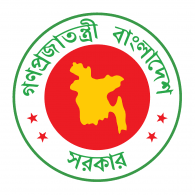Last Updated: 2019-05-06 11:10:10
In Bangladesh there are 27 different ethnic groups spreading across the country. According to the Census 2011, the total number of tribal population is about 1586141 of which male is about 797477 and female is about 786664. The indigenous groups belong to different ethno-lingual communities, profess diverse faith, have unique cultures which is are different to mainstream culture and are at different levels of development (economically and educationally). The proportion of tribal population in 64 districts varies from less than 01% in majority of the districts to 56% in Rangamati, 48.9% in Khagrachari and 48% in Bandarban in the Chittagong Hill Tracts (CHT). Most of them inhabit in areas such as hilly terrains or the forest areas where access is generally difficult. Moreover many of these tribal groups are also characterized by low growth rate compared to the mainstream population.
Due to the variations (in terms of culture, socio-economic situation) across the different tribal / ethnic groups, GOB recognizes the need to approach the communities differently in order to ensure that the health care delivery system is accessible and acceptable to them. The government is committed to have a more targeted approach for the tribal/ethnic communities in order to achieve better outcomes. As a result of its firm commitment to improve the status of tribal/ethnic communities and honor the various international and national goals of MOHFW under its new Health, Population and Nutrition Sector program (HPNSP) 2017 – 2022 is making provision to implement HNP services to the tribal /ethnic communities.
Tribal/ethnic communities are immensely burdened by various diseases. Malaria, Diarrhea and Acute Respiratory Infection are most common diseases in CHT. In CHT most of the girls married before their Eighteenth birth day which increases the risk of dying due to complications related to early pregnancy. Although TFR is low, Maternal Mortality is still high. Infant Mortality Rate in CHT is close to the national level. Anti Natal Care (ANC), and Post Natal Care (PNC) visits to trained personnel by women in CHT are lower than the national level. Full immunization coverage by age 12 months is 79% in CHT compared to 82% overall in Bangladesh according to the Coverage Evaluation Survey undertaken in 2015. In general food poverty is widespread in CHT with majority of the ethnic people are not secured in respect to food and pure drinking water.
Most dwellers of the hilly region inhabit in hard to reach areas such as Hilly terrains or forested. The SDGs were adopted on 25 September 2015 under the slogan of “Leave no-One-Behind”. Tribal peoples share this dream & look forward to being a full part of SDG journey of inclusive health development.
In order to provide health care services among ethnic population living in hard to reach areas, it is necessary to arrange monthly satellite clinic services and transportation cost of a seriously ill patient from a hard to reach area to a nearby physician/health facility center. Places like Modok under Thanchi Upazila, Boga Lake in Ruma Upazila and many other places under Naikhyongchari and Alikadam Upazila of Bandarban, Maidung and Dumdumia in Juraichari Upazila, Sajek in Baghaichari Upazila and many other places under Bilaichari and Barkal Upazila under Rangamati and Badapara and Bhaibonchora in Sadar Upazila, Naraichari of Dighinala Upazila including many other places under Khagrachari district belong to such area.
Depending on the geographical location, remoteness and mode of available transportation and no transportation, costs of satellite clinic services/mobile medical team and referral case shall vary. Considering a test case of Modok under Thanchi Upazila of Bandorban district and Sazek under Baghaichari Upazila of Rangamati district the following cost estimate is made to standardize a budget for the mobile medical team.
Community Based Health Care (CBHC) OP will support medicine and other logistic for mobile medical team.
To ensure nutritional status of tribal population necessary coordination and information sharing on regular basis with National Nutritional Service (NNS) would be ensured. For Satellite Clinic Services / Mobile Medical Team:

